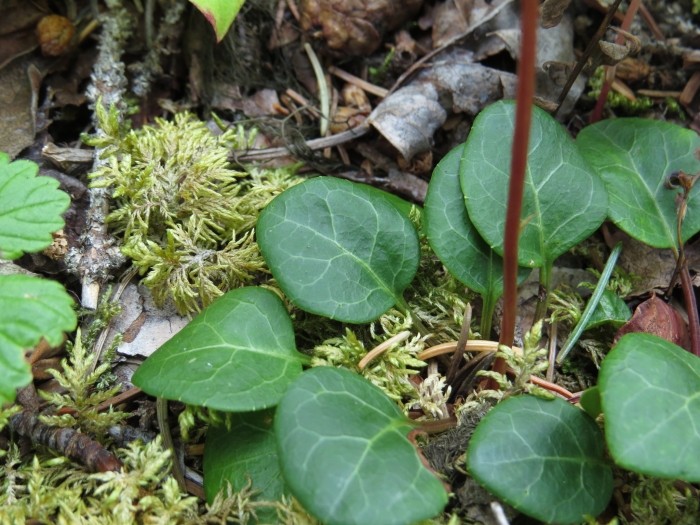Green-Flowered Wintergreen
(Pyrola chlorantha)
Green-Flowered Wintergreen (Pyrola chlorantha)
/
/

Jack Bindernagel
CC BY 4.0
Image By:
Jack Bindernagel
Recorded By:
Copyright:
CC BY 4.0
Copyright Notice:
Photo by: Jack Bindernagel | License Type: CC BY 4.0 | License URL: http://creativecommons.org/licenses/by/4.0/ | Rights Holder: Jack Bindernagel | Publisher: iNaturalist | Date Created: 2023-07-21T17:21:06-07:00 |

























Estimated Native Range
Summary
Pyrola chlorantha, commonly known as Green-flowered Wintergreen, is a perennial herb native to coniferous and mixed forests, as well as alpine and subalpine meadows across northern Eurasia and North America, including the Northeastern and Western United States. It typically grows to a modest height of 4-6 inches (10-15 centimeters) with a similar spread. The plant is characterized by its basal rosette of evergreen leaves and slender stalks that bear nodding, greenish-white flowers during the summer months. The flowers, while not brightly colored, have a subtle charm and are somewhat showy due to their unique hue.
Green-flowered Wintergreen is valued for its evergreen foliage and delicate flowers, which can add interest to shade gardens and naturalized woodland settings. It is well-suited for cultivation in cool, temperate climates, and prefers partial to full shade. The plant requires consistently moist, well-drained soil rich in organic matter. It is not commonly used in large-scale plantings but is appreciated by enthusiasts of native and woodland plants. In cultivation, it can serve as a ground cover or as an understory plant in shaded gardens. While it is considered endangered in some U.S. states, it is not typically associated with significant diseases or pests. However, its rarity in certain areas should be considered when planning to cultivate it, and sourcing plants from reputable nurseries that do not contribute to the decline of wild populations is essential.CC BY-SA 4.0
Green-flowered Wintergreen is valued for its evergreen foliage and delicate flowers, which can add interest to shade gardens and naturalized woodland settings. It is well-suited for cultivation in cool, temperate climates, and prefers partial to full shade. The plant requires consistently moist, well-drained soil rich in organic matter. It is not commonly used in large-scale plantings but is appreciated by enthusiasts of native and woodland plants. In cultivation, it can serve as a ground cover or as an understory plant in shaded gardens. While it is considered endangered in some U.S. states, it is not typically associated with significant diseases or pests. However, its rarity in certain areas should be considered when planning to cultivate it, and sourcing plants from reputable nurseries that do not contribute to the decline of wild populations is essential.CC BY-SA 4.0
Plant Description
- Plant Type: Shrub, Herb
- Height: 0.5-1 feet
- Width: 0.5-1 feet
- Growth Rate: Slow
- Flower Color: Green, White
- Flowering Season: Summer
- Leaf Retention: Evergreen
Growth Requirements
- Sun: Part Shade, Full Shade
- Water: Medium
- Drainage: Medium
Common Uses
Low Maintenance
Natural Habitat
Coniferous and mixed forests, alpine and subalpine meadows
Other Names
Common Names: Greenish Wintergreen, Green-Flowered Shineleaf, Pale-Green Wintergreen
Scientific Names: , Pyrola chlorantha, Pirola chlorantha, Pyrola chlorantha f. paucifolia, Pyrola chlorantha var. convoluta, Pyrola chlorantha var. paucifolia, Pyrola chlorantha var. revoluta, Pyrola chlorantha var. saximontana, Pyrola convoluta, Pyrola media
GBIF Accepted Name: